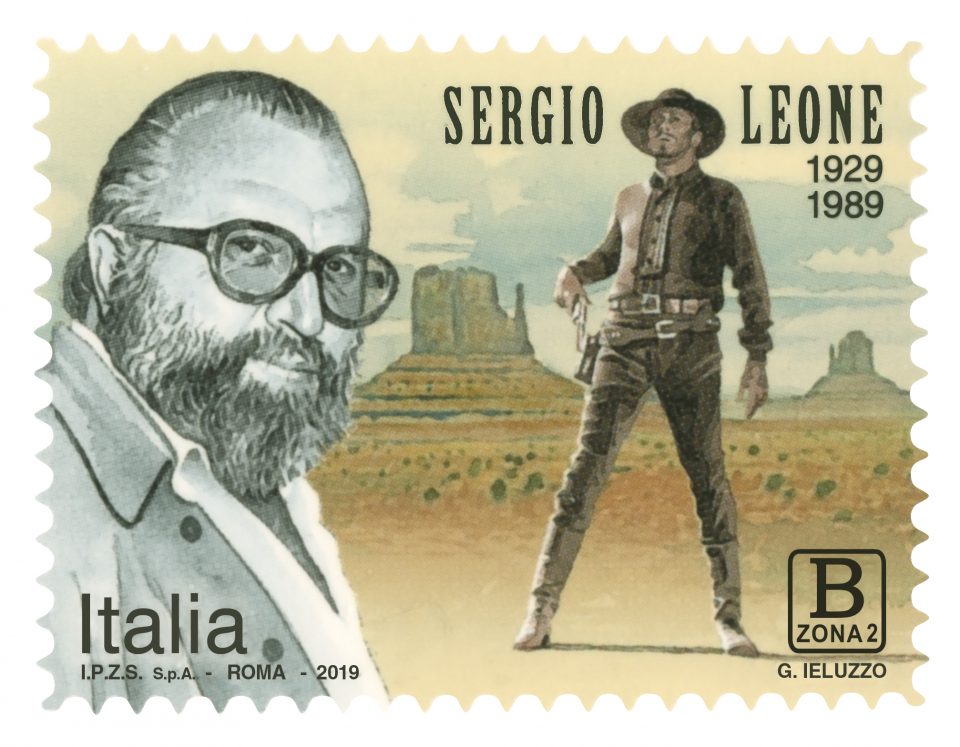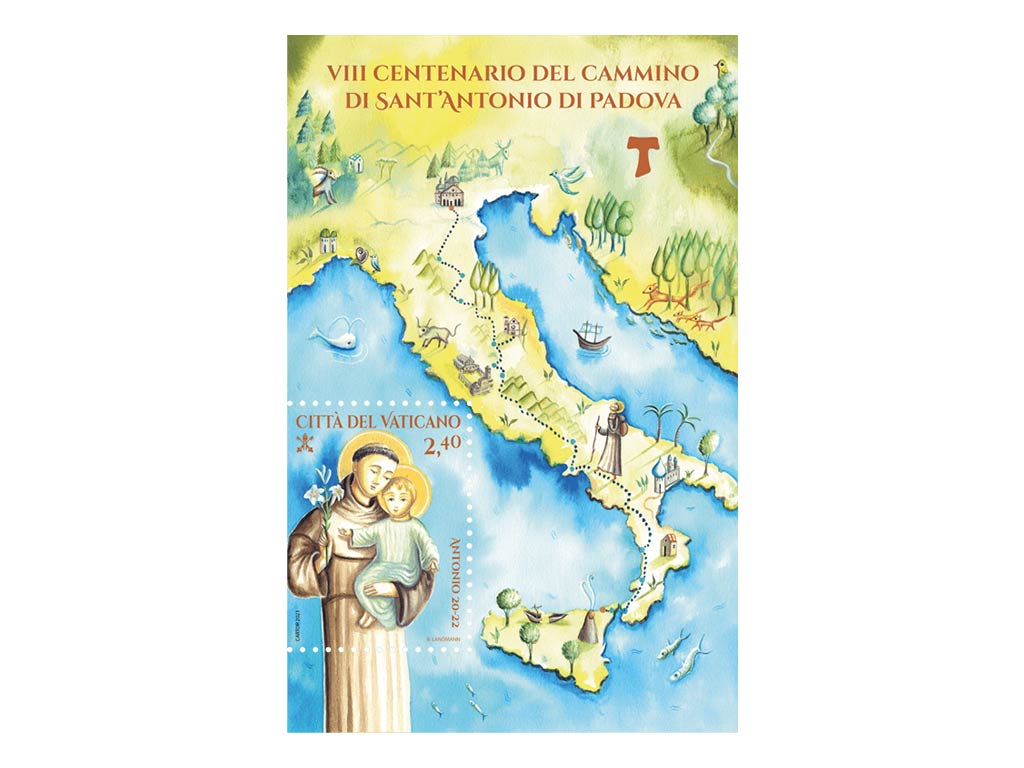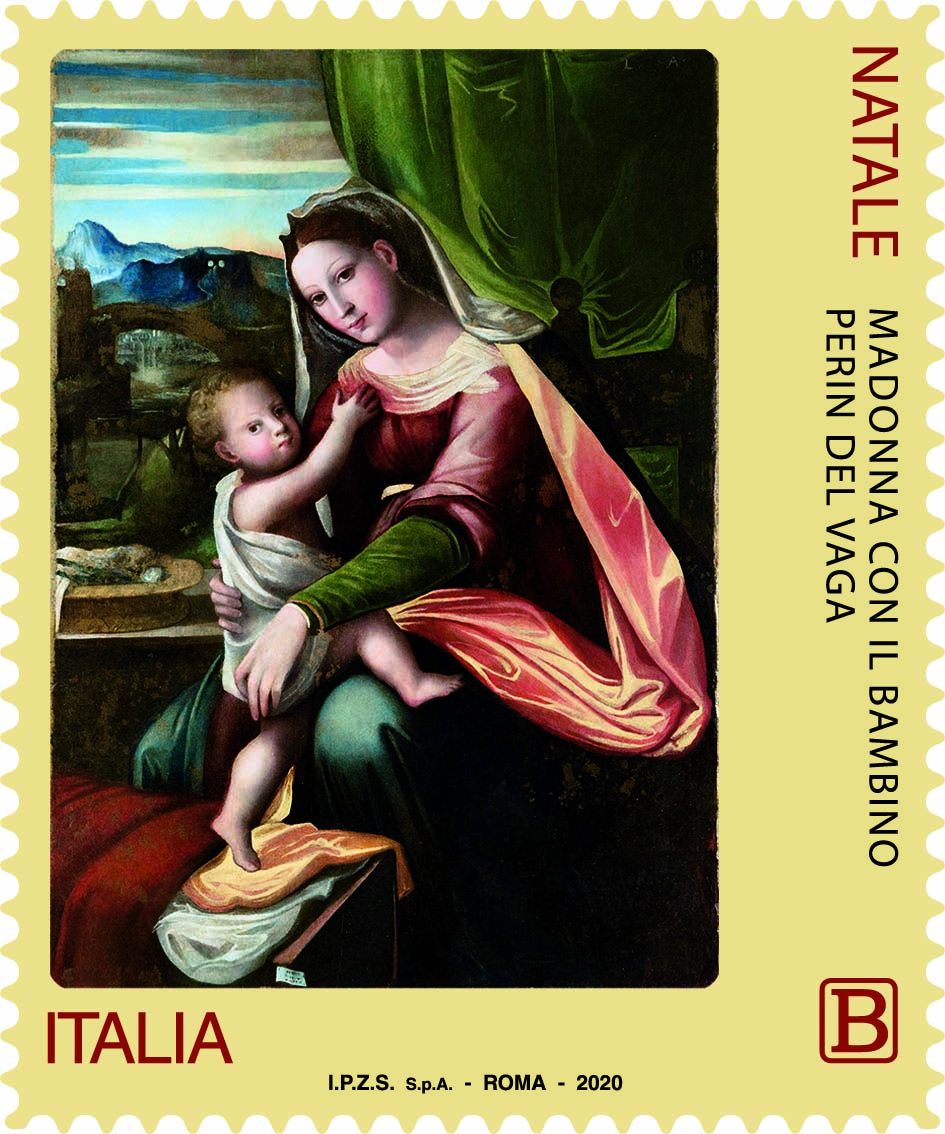POSTE ITALIANE 17^ emissione anno 2019 del 30 Aprile “francobollo dedicato al regista Sergio Leone nel trentennale della scomparsa”

Il Ministero dello Sviluppo Economico ha emesso il 30 aprile 2019 un francobollo ordinario appartenente alla serie tematica “le Eccellenze italiane dello spettacolo” dedicato a Sergio Leone, nel trentennale della scomparsa, relativo al valore della tariffa B zona 2, corrispondente ad €2.40.
- data/date 30 Aprile 2019
- dentellatura/serration 11
- stampa/printing fustellatura/rotocalco
- tipo di carta/paper type bianca patinata neutra
- stampato I.P.Z.S. Roma
- tiratura 2.500.000
- fogli/sheet 45
- dimensioni/dimension 40 X 30 mm
- costo/price B Zona 2= €2.40
- bozzettista G. Ieluzzo
- num. catalogo / catalog num. Michel 4112 YT 3873
Sergio Leone (Roma, 3 gennaio 1929 – Roma, 30 aprile 1989) è stato un regista, sceneggiatore e produttore cinematografico italiano.
È riconosciuto universalmente come uno dei più importanti registi della storia del cinema, particolarmente noto per i suoi film del genere spaghetti-western. Nonostante abbia diretto pochi film, la sua regia ha fatto scuola e ha contribuito alla rinascita del western negli anni sessanta, grazie a titoli come Per un pugno di dollari, Per qualche dollaro in più, Il buono, il brutto, il cattivo (che formano la cosiddetta “trilogia del dollaro”), C’era una volta il West e Giù la testa, mentre con C’era una volta in America ha profondamente rinnovato il lessico dei gangster movie (queste ultime tre pellicole compongono invece la “trilogia del tempo”).
Nel 1972 con Giù la testa è stato vincitore del David di Donatello per il miglior regista. Nel 1985 con C’era una volta in Americaha vinto il Nastro d’argento al regista del miglior film, è stato nominato al Golden Globe per il miglior regista ed è stato nominato al David di Donatello per il miglior regista straniero.
Nel 1984 gli è stato inoltre assegnato il David di Donatello René Clair (premio che ora non viene più assegnato).
Il 9 ottobre 2014 gli è stato attribuito, alla cerimonia del Premio America presso la Camera dei deputati, un premio speciale alla memoria dalla Fondazione Italia USA.
Biografia
Le origini e gli inizi
Sergio Leone nacque a Roma il 3 gennaio del 1929, figlio di Roberto Roberti (nome d’arte di Vincenzo Leone; 1879-1959), un regista ed attore originario di Torella dei Lombardi (in provincia di Avellino), considerato uno dei pionieri del cinema muto italiano, e di Bice Waleran, un’attrice romana. «Il mio modo di vedere le cose talvolta è ingenuo, un po’ infantile, ma sincero. Come i bambini della scalinata di Viale Glorioso»: la targa con questa scritta è stata affissa per segnalare la casa in cui Leone ha vissuto gli anni dell’infanzia e della gioventù lungo la scalinata di viale Glorioso che scende verso Trastevere. Leone iniziò a lavorare nell’ambiente cinematografico già all’età di diciotto anni. Ebbe infatti una piccola parte, come comparsa, in Ladri di biciclette di Vittorio De Sica (è uno dei preti tedeschi sorpresi dalla pioggia). Successivamente, Leone inizierà ad interessarsi del genere peplum, basato su azioni eroiche ed epiche di soldati e imperatori sia greci sia romani.
Gli anni cinquanta: i peplum e i primi lavori importanti
I primi lavori di un certo rilievo lo videro come assistente regista o direttore della seconda unità (non accreditato) in alcune produzioni hollywoodiane di grande importanza, girate agli studi di Cinecittà a Roma, nel periodo della cosiddetta Hollywood sul Tevere: quelli degni di nota sono Quo vadis? di Mervyn LeRoy (1951) e soprattutto il colossal Ben-Hur di William Wyler (1959), vincitore di 11 Oscar. Nel 1959 subentra a Mario Bonnard, colpito da una malattia che lo costrinse ad abbandonare il set, alla regia di Gli ultimi giorni di Pompei, al quale aveva collaborato alla sceneggiatura.
Tuttavia i titoli di apertura del film non riportano il suo nome ma solo quello di Bonnard. Come risultato, quando finalmente ebbe la possibilità di debuttare da solo come regista con Il colosso di Rodi (1961), grazie alla lunga esperienza, Leone riuscì a produrre il film con un basso budget che sembrasse tanto spettacolare quanto un vero e proprio kolossal di Hollywood. La vicenda, ambientata nell’isola di Rodi, aveva come protagonisti due amanti: un viaggiatore e la figlia del re di Rodi, finanziatore della costruzione di un enorme gigante di bronzo in grado di versare braci ardenti sui viaggiatori nemici che osavano avvicinarsi troppo all’isola.
Gli anni sessanta: gli “spaghetti-western” e il successo
Nei primi anni sessanta, la richiesta di peplum si esaurì, e Leone fu fortunato a essere tra i primi pionieri del genere che prese il loro posto nelle preferenze del largo pubblico, il western, dando anzi vita a un proprio importante sottogenere di matrice italiana, noto con il nome di spaghetti-western, il cui modello di stile divenne il primo film del genere del regista, Per un pugno di dollari del 1964, uno dei più famosi della storia del genere.
Inoltre, lavorando a questo film, Sergio Leone ha lanciato nel firmamento delle star Clint Eastwood, che fino ad allora era rimasto un modesto attore televisivo statunitense con pochi ruoli al suo attivo. I due film seguenti, Per qualche dollaro in più (1965) e Il buono, il brutto, il cattivo (1966), completano quella che è conosciuta come la “trilogia del dollaro”. Ciascuno di questi film ha potuto beneficiare di un budget sempre maggiore e di migliori mezzi tecnici del precedente, e le capacità del regista sono riuscite anche a produrre risultati via via superiori anche al botteghino, dato il successo di pubblico. Tutti e tre i film si avvalsero delle notevoli colonne sonore di Ennio Morricone, compositore reso noto proprio grazie a queste opere, che accompagnerà Leone nella realizzazione di tutti i successivi film fino a C’era una volta in America nel 1984.
Gli anni settanta: i film negli USA
Successivamente, Leone diresse Giù la testa nel 1971, un progetto messo su in poco tempo con un budget medio, interpretato da James Coburn e Rod Steiger. Leone nel frattempo non rimase completamente inattivo: scrisse varie sceneggiature.
Gli anni ottanta: il ritorno in Italia
All’inizio degli anni ottanta Leone produsse due film di Carlo Verdone: Un sacco bello (1980) e Bianco, rosso e Verdone (1981). Infatti il regista era molto amico del padre di Carlo, Mario Verdone, noto critico romano di cinema, e come un padre Leone aiutò Carlo nella realizzazione dei suoi primi due film, consigliandolo nelle scelte di regista.
Dalla seconda metà degli anni sessanta fino agli anni ottanta Sergio Leone lavorò per circa dieci anni a un proprio progetto epico, questa volta incentrato sull’amicizia di due gangster ebrei a New York: C’era una volta in America (1984): era un’idea nata prima ancora di C’era una volta il West. Il film ebbe grande successo di pubblico e critica in tutto il mondo. Il film è considerato l’ultimo capolavoro del regista. Nel 1986 si ritrova di nuovo a lavorare con l’amico Carlo Verdone, questa volta nella realizzazione del film Troppo forte con lo stesso Verdone, Mario Brega e Alberto Sordi protagonisti. Leone ne scrisse il soggetto e la sceneggiatura assieme a Verdone e a Rodolfo Sonego.
Gli ultimi progetti e la morte
All’inizio del 1989 fondò la Leone Film Group, casa di produzione cinematografica. Quando morì il 30 aprile 1989 per un attacco di cuore a 60 anni, il regista era al lavoro su un progetto che avrebbe dovuto riguardare l’Assedio di Leningrado durante la Seconda guerra mondiale. Il film avrebbe dovuto raccontare, oltre che le pagine più drammatiche della guerra in Russia, una storia d’amore tra un giornalista statunitense e una ragazza russa, in un ideale messaggio di pace fra le due superpotenze. L’URSS di Gorbačëv, in piena perestrojka, aveva già concesso alla casa di produzione del regista un’autorizzazione di massima per le riprese sul suolo sovietico, ma la morte di Leone fece sfumare tutto. Sergio Leone morí il 30 aprile 1989, all’età di 60 anni, per un attacco cardiaco. La salma del regista è sepolta nel piccolo cimitero del borgo di Pratica di Mare.
Se sei interessato ad acquistare questo francobollo, lo puoi acquistare al prezzo di € 3.00. Inviami una richiesta alla email: protofilia1@gmail.com
POSTE ITALIANE 17th issue of the year 2019 of April 30th “stamp dedicated to the director Sergio Leone in the thirtieth anniversary of his death”

On April 30, 2019, the Ministry of Economic Development issued an ordinary stamp belonging to the thematic series “Italian Excellencies of the show” dedicated to Sergio Leone, in the thirtieth anniversary of his death, relating to the value of tariff B zone 2, corresponding to € 2.40.
Sergio Leone (Rome, 3 January 1929 – Rome, 30 April 1989) was an Italian director, screenwriter and film producer.
He is universally recognized as one of the most important directors in the history of cinema, particularly known for his films of the spaghetti-western genre. Despite directing a few films, his directing was a school and contributed to the revival of the western in the sixties, thanks to titles such as For a Fistful of Dollars, For a Few Dollars More, The Good, the Bad, the Bad (Which Form the so-called “trilogy of the dollar”), Once upon a time there was the West and Down the head, while with Once upon a time in America he profoundly renewed the lexicon of the gangster movies (these last three films instead make up the “trilogy of time” “).
In 1972 with Giù la testa he was winner of the David di Donatello for the best director. In 1985 with C’era una volta in America, he won the Silver Ribbon for the Best Film Director, was nominated for a Golden Globe for Best Director and was nominated for a David di Donatello Award for Best Foreign Director.
In 1984 he was also awarded the David di Donatello René Clair (prize that is no longer awarded).
On 9 October 2014 he was awarded, at the America Award ceremony at the Chamber of Deputies, a special prize to the memory of the Italy Italy Foundation.
Biography
Origins and beginnings
Sergio Leone was born in Rome on 3 January 1929, son of Roberto Roberti (stage name of Vincenzo Leone; 1879-1959), a director and actor from Torella dei Lombardi (in the province of Avellino), considered one of the pioneers of Italian silent cinema, and of Bice Waleran, a Roman actress, born of a Milanese family of remote Austrian origins. “My way of looking at things is sometimes naive, a little childish, but sincere. Like the children of the Viale Glorioso staircase »: the plaque with this inscription was affixed to indicate the house in which Leone lived the years of childhood and youth along the staircase of Viale Glorioso that descends towards Trastevere. Leone started working in the cinema environment at the age of eighteen. In fact he had a small part, as an appearance, in Ladri di biciclette of Vittorio De Sica (he is one of the German priests surprised by the rain). Later, Leone began to take an interest in the genus peplum, based on heroic and epic actions by both Greek and Roman soldiers and emperors.
The fifties: the peplums and the first important works
The first important works saw him as assistant director or director of the second unit (uncredited) in some very important Hollywood productions, filmed at Cinecittà studios in Rome, during the so-called Hollywood on the Tiber: those worth mentioning are Quo vadis? by Mervyn LeRoy (1951) and especially the colossal Ben-Hur by William Wyler (1959), winner of 11 Oscars. In 1959 he took over from Mario Bonnard, struck by an illness that forced him to abandon the set, directed by The Last Days of Pompeii, to which he had collaborated on the screenplay.
However the opening titles of the film do not bear his name but only that of Bonnard. As a result, when he finally had the chance to make his own debut as a director with The Colossus of Rhodes (1961), thanks to his long experience, Leone was able to produce the film with a low budget that seemed as spectacular as a real Hollywood blockbuster . The story, set in the island of Rhodes, had as protagonists two lovers: a traveler and the daughter of the king of Rhodes, financier of the construction of an enormous bronze giant able to pour hot embers on the enemy travelers who dared to get too close to island.
The sixties: the “spaghetti westerns” and the success
In the early sixties, the demand for peplum was exhausted, and Leone was fortunate to be among the first pioneers of the genus that took their place in the preferences of the general public, the western, giving life to its own important sub-genre of Italian origin, known as the spaghetti-western, whose style model became the first film of the genre by the director, For a Fistful of Dollars in 1964, one of the most famous in the history of the genre.
Furthermore, working on this film, Sergio Leone launched Clint Eastwood in the stars, which until then had remained a modest US television actor with few roles to his credit. The following two films, For a Few Dollars More (1965) and The Good, the Bad, the Bad (1966), complete what is known as the “dollar trilogy”. Each of these films was able to benefit from an ever-increasing budget and better technical means than the previous one, and the director’s abilities also managed to produce results that were gradually superior to the box office too, given the success of the public. All three films made use of the remarkable soundtracks of Ennio Morricone, a composer made known thanks to these works, who will accompany Leone in the making of all subsequent films up to C’era una volta in America in 1984.
The seventies: films in the USA
Subsequently, Leone directed Giù la testa in 1971, a project put up in a short time with a medium budget, interpreted by James Coburn and Rod Steiger. Leone in the meantime did not remain completely inactive: he wrote several screenplays.
The eighties: the return to Italy
In the early eighties Leone produced two films by Carlo Verdone: Un sacco bello (1980) and Bianco, rosso e Verdone (1981). In fact, the director was a close friend of Carlo’s father, Mario Verdone, a well-known Roman film critic, and like a father Leone helped Carlo with the making of his first two films, recommending him as director.
From the second half of the sixties until the eighties Sergio Leone worked for about ten years on his own epic project, this time focusing on the friendship of two Jewish gangsters in New York: Once upon a time in America (1984): it was a idea born even before Once upon a time the West. The film had great success with audiences and critics around the world. The film is considered the last masterpiece of the director. In 1986 he again finds himself working with his friend Carlo Verdone, this time in the making of the film Troppo forte with Verdone himself, Mario Brega and Alberto Sordi as protagonists. Leone wrote the subject and the script together with Verdone and Rodolfo Sonego.
The latest projects and death
At the beginning of 1989 he founded the Leone Film Group, a film production company. When he died on April 30, 1989 from a heart attack at 60, the director was at work on a project that was to cover the Siege of Leningrad during World War II. The film should have told, in addition to the most dramatic pages of the war in Russia, a love story between an American journalist and a Russian girl, in an ideal message of peace between the two superpowers. Gorbachev’s USSR, in full perestroika, had already granted the director’s production company a general license for shooting on Soviet soil, but the death of Leone caused everything to blur. Sergio Leone died on April 30, 1989, at the age of 60, of a heart attack. The body of the director is buried in the small cemetery of the village of Pratica di Mare.
If you are interested in buying this stamp, you can buy it for € 3.00. Send me a request to the email: protofilia1@gmail.com







